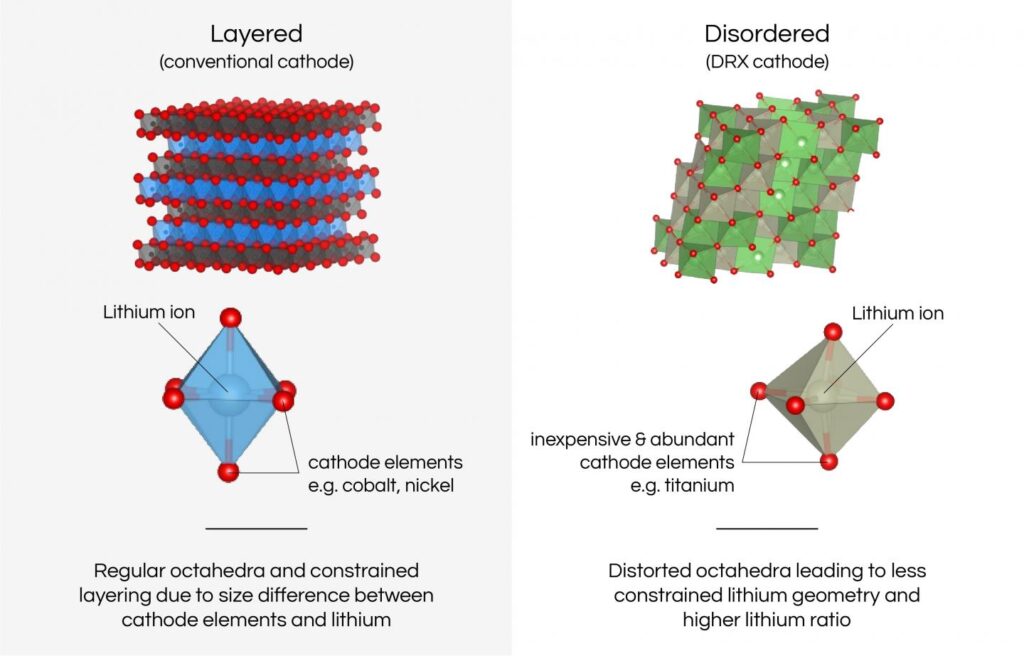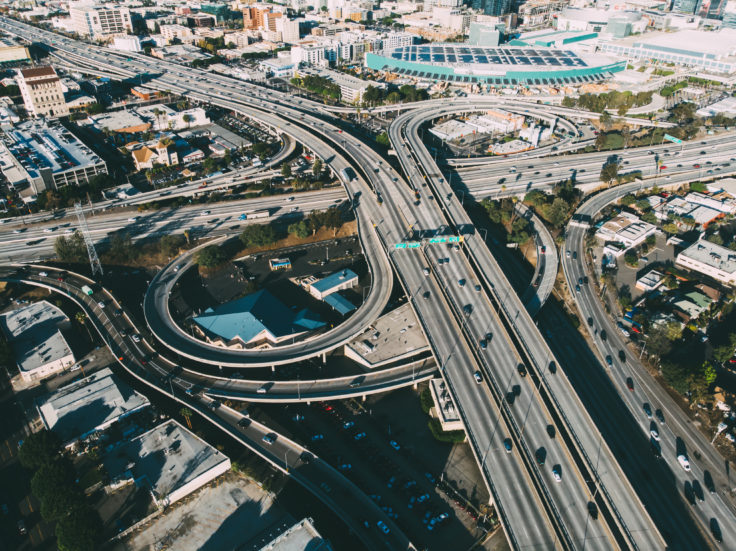Electric Cars have been the cornerstone of American science fiction and scientific fact for the last several decades, utterly inseparable from most visions of a cleaner, more sustainable future. This inclusion bears scrutiny. Transitioning to electric vehicles (EVs) would undeniably reduce the use of fossil fuels, their pollution, and the dangerous petropolitics they encourage. But EVs’ dependence on scarce and expensive minerals is heavily criticized, especially when these resources are often mined under less-than-humane conditions using less-than-sustainable methods. However, recent technological breakthroughs promise to address these grievances, with new research eliminating problematic materials from EVs’ battery needs (Castelvecchi, 2021). These developments, while certainly game-changing, should still give us pause. Even without cobalt, nickel, or other problematic materials, electric vehicles still perpetuate a toxic and harmful car culture that damages minority communities, degrades the environment, and devalues cities thanks to their inefficient and inequitable infrastructure. Whether in the Jetsons, a Tesla advertisement, or the Prius in your neighbor’s garage, EV technology in the US is too often envisioned as electric cars, a way to facilitate existing lifestyles rather than an opportunity to abandon an obviously unsustainable culture and find ways to do better. As battery technology becomes more powerful, accessible, and ethical, it must be implemented much more broadly and creatively than merely building sleeker, faster, futuristic cars.
The most relevant contemporary criticism of EVs, and of many renewable energy technologies, is their reliance on “transition minerals” which hamper batteries’ financial, logistical, and ethical viability. Production of cobalt and nickel, vital components in nearly all rechargeable batteries, is fraught with human rights abuse, health hazards, and environmental degradation (Church, 2018, p. 17, 24; Opray, 2017). Nickel is particularly sensitive to growing demand because of its use in high-grade steel, electronics, and chemical catalysts (Church, 2018, p. 23). With 30% of its supply coming from Russia, acute nickel shortages have become even more severe following Putin’s invasion of Ukraine (Ohnsman, 2022). Mining of “rare earths” (neodymium, dysprosium, etc.)—necessary for the specialized magnets in batteries and wind turbines—contaminates air, soil, and water with toxic waste products (Hongqiao, 2016). If expert projections hold true, widespread adoption will see “hundreds of millions” of new EVs sold, raising questions as to whether reliance on these materials (and their exploitative mining methods) is merely shunting environmental damage off to developing nations (UNCTAD, 2020).
In the face of EVs’ problematic reliance on transition metals, there are huge incentives to build durable, energy-dense batteries without these materials. Yet this is a daunting challenge. Nickel-manganese-cobalt and nickel-cobalt-aluminum batteries have long dominated the field for their exceptional power output, safety, and long lifespan. Cobalt is able to layer with lithium ions into tightly-packed crystal structures, leading many to believe it was essential (Manthiram & Goodenough, 2021). In 2020, however, researchers at the University of Texas, Austin published successful tests replicating lithium-cobalt oxide crystal structures with a combination of nickel, manganese, and aluminum, creating the world’s first practical cobalt-free battery with similar or greater performance than its cobalt-containing predecessors (Li et al., 2020). Other materials scientists at Hanyang University in Seoul, South Korea have matched this feat, confirming that highly refined nickel and advanced manufacturing techniques can decouple cobalt from the world’s battery needs (Ryu et al., 2021).
Unfortunately, these amazing breakthroughs are somewhat curtailed by their intensive reliance on nickel. Though cobalt mining often gets the spotlight for its concentrated and prolific human rights abuse, nickel mining is a similar flashpoint for exploitation and violence (Church, 2018, p. 24-26). In addition, nickel’s high demand and contested supply chain make it far from an ideal candidate for long-term dependence. But, as with cobalt, there are promising solutions to the nickel problem. Over a decade of research at the Lawrence Berkeley National Laboratory shows that nickel can be eliminated by using an entirely different crystal structure. Instead of the layered sheets of lithium-cobalt oxide or its nickel-manganese-aluminum replacement, compounds called “disordered rock salts” form a cube-shaped molecule that allows stable, repeated charging using mostly lithium and manganese, elements which are available in relative abundance (Yang et al., 2021).

Even when cobalt, nickel, and other problematic transition metals are eliminated from EV technology, we are still left with a very real question: With this new technology, why on earth are we making cars?
As cities around the world build green infrastructure to reduce carbon emissions, the harmful roles of car culture and its accompanying infrastructure are overwhelmingly apparent. Driven by marketing campaigns in the 1920s and shifted into high gear during the postwar economic boom of the 1950s, American culture centers single-occupancy vehicles as markers of self-worth, making them the nation’s primary mode of transportation. To accommodate this, cities built urban highways, supposedly to reduce traffic congestion, facilitate commuters in and out of downtown areas, and replicate the economic conditions of rapidly-growing suburbs (Bocarejo et al., 2012). Yet urban highways have had the opposite effect, occupying valuable real estate while decreasing nearby property values, isolating downtown areas from other sections of the cites, and increasing traffic as fewer residents are able to utilize public transit and disruptions to the city’s grid made commutes longer (Ibid; Allan & Reich, 2021). Highway construction in New York, Washington D.C, New Orleans, Philadelphia, and countless other cities was used to bulldoze and pollute minority neighborhoods to the point that the US Secretary of Transportation now recognizes that “there is racism physically built into some of our highways” (CNU, 2019; Popovich et al., 2021). In addition to the dense air pollution caused by vehicle emissions, urban highways contaminate freshwater through road runoff, destroy wildlife habitats, and release excessive greenhouse gasses during their construction and maintenance (Dutzik, 2018; Williams-Derry, 2007).

Removal of these urban highways is now the keystone of many green infrastructure plans. San Francisco, Seoul, Paris, Portland (OR), and Milwaukee have demolished major highways to successfully rejuvenate public spaces, replacing them with public parks, bicycle-friendly routes, and high-value commercial districts. Though these projects save money in the long term, demolition imposes a substantial monetary cost to those city governments. Thus, a forward-thinking strategy for building green infrastructure should aim to reduce dependency on single-occupancy vehicles. But in popular visions of a sustainable, electric future, this is rarely realized. California, which leads the US in progressive energy policy, has focused almost exclusively on EVs to reduce its transit-related emissions, which account for more than 40% of the state’s total emissions (Taylor, 2020). By investing heavily into charging stations and subsidies for new EV purchases, California is spending its financial and political capital on a stop-gap rather than a comprehensive solution that does not address the major issues inherent in car usage.

To avoid the pitfalls of uninhibited car culture, we must focus on more efficient and creative ways to use advancing battery technology. Bogotá, Colombia illustrates how an expanded bus system, paired with a robust bike-share program and pedestrian-friendly greenspace, can fulfill a busy metropolis’ transportation needs. By forgoing urban highways entirely, Bogotá’s public transportation is internationally renowned for its convenience and sustainability (Allan & Reich, 2021). A research initiative in Bulawayo, Zimbabwe shows how “trackless trams” can integrate new sustainable battery technologies into this public transit model (Ndlovu & Newman, 2021; 2020). An ambitious new project in West Virginia sees a new battery manufacturer collaborating with the United Mine Workers of America to produce cobalt-free grid storage for solar and wind energy, providing economic revitalization to Appalachia while maintaining sustainability and energy independence (Colthorpe, 2022). These projects help save money, communities, and the environment by avoiding the glaring flaws of American car culture, and, in doing so, help envision a future worth racing towards.
References
Allan, M., & Reich, D. T. (2021). Leapfrogging Past the Urban Highway. Sustainable Transport, 32, 3.
Bocarejo, J. P., LeCompte, M. C., & Zhou, J. (2012). The Life and Death of Urban Highways. Institute for Transportation and Development Policy and EMBARQ. https://itdpdotorg.wpengine.com/wp-content/uploads/2014/07/42.-LifeandDeathofUrbanHighways_031312.pdf
Castelvecchi, D. (2021). Electric cars and batteries: How will the world produce enough? Nature, 596(7872), 336–339. https://doi.org/10.1038/d41586-021-02222-1
Church, C. (2018). Green Conflict Minerals: The Fuels of Conflict in the Transition to a Low-Carbon Economy (p. 56) [IISD Report]. International Institute for Sustainable Development. https://www.iisd.org/system/files/publications/green-conflict-minerals.pdf
CNU. (2019). Freeways Without Futures 2019 (Freeways Without Futures). Congress for the New Urbanism. https://www.cnu.org/sites/default/files/FreewaysWithoutFutures_2019.pdf
Colthorpe, A. (2022, March 23). Cobalt-free lithium battery gigafactory to help transition West Virginia away from coal economy. Energy Storage News. https://www.energy-storage.news/cobalt-free-lithium-battery-gigafactory-to-help-transition-west-virginia-away-from-coal-economy/
Dutzik, T. (2018, April 4). Can We Make Environmental Peace with Car Culture? After Yesterday, Probably Not. Frontier Group. https://frontiergroup.org/blogs/blog/fg/can-we-make-environmental-peace-car-culture-after-yesterday-probably-not
Hongqiao, L. (2016, August 25). The dark side of renewable energy. Earth Journalism Network. https://earthjournalism.net/stories/the-dark-side-of-renewable-energy
Li, W., Lee, S., & Manthiram, A. (2020). High-Nickel NMA: A Cobalt-Free Alternative to NMC and NCA Cathodes for Lithium-Ion Batteries. Advanced Materials, 32(33), 2002718. https://doi.org/10.1002/adma.202002718
Manthiram, A., & Goodenough, J. B. (2021). Layered lithium cobalt oxide cathodes. Nature Energy, 6(3), 323–323. https://doi.org/10.1038/s41560-020-00764-8
Ndlovu, V., & Newman, P. (2020). Leapfrog Technology and How It Applies to Trackless Tram. Journal of Transportation Technologies, 10(3), 198–213. https://doi.org/10.4236/jtts.2020.103013
Ohnsman, A. (2022, March 9). Russian Nickel Compounds Pain For Carmakers Contending With Chip Shortages. Forbes. https://www.forbes.com/sites/alanohnsman/2022/03/09/russian-nickel-compounds-pain-for-carmakers-contending-with-chip-shortages/
Popovich, N., Williams, J., & Lu, D. (2021, May 27). Can Removing Highways Fix America’s Cities? The New York Times. https://www.nytimes.com/interactive/2021/05/27/climate/us-cities-highway-removal.html
Ryu, H.-H., Hohyun Sun, H., Myung, S.-T., S. Yoon, C., & Sun, Y.-K. (2021). Reducing cobalt from lithium-ion batteries for the electric vehicle era. Energy & Environmental Science, 14(2), 844–852. https://doi.org/10.1039/D0EE03581E
Taylor, C. (2020, November 17). One Simple Tweak To California’s Car Culture Could Help Save The World. Mashable. https://in.mashable.com/social-good/18296/one-simple-tweak-to-californias-car-culture-could-help-save-the-world
UNCTAD. (2020). Commodities at a Glance: Special Issue on Strategic Battery Raw Materials. United Nations Conference on Trade and Development. https://doi.org/10.18356/9ba5e76c-en
Williams-Derry, C. (2007). Increases in greenhouse-gas emissions from highway-widening projects [Sightline Research Backgrounder]. Sightline Institute. https://transdef.org/media/Sightline-GHG-analysis.pdf
Yang, J. H., Kim, H., & Ceder, G. (2021). Insights into Layered Oxide Cathodes for Rechargeable Batteries. Molecules, 26(11), 3173. https://doi.org/10.3390/molecules26113173